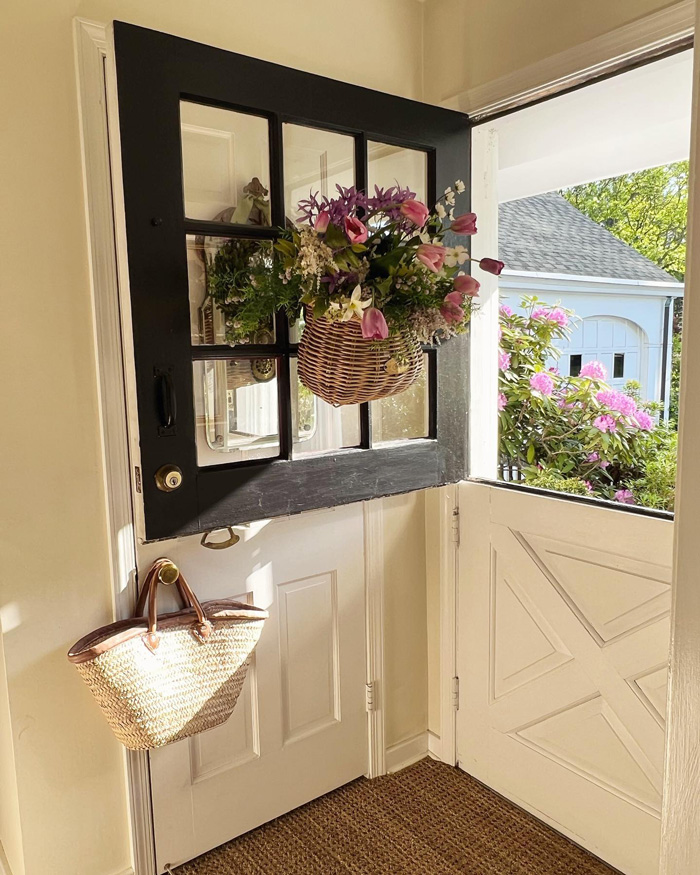Exploring Dutch Doors: History, Design, and Uses
Exploring Dutch Doors: History, Design, and Uses
Blog Article

Exploring Dutch doors unveils a fascinating journey through history, design, and practical applications. Originating in the Netherlands, these distinctive doors have captured the imagination of homeowners worldwide for centuries. From their humble beginnings to their modern-day revival, Dutch doors continue to enchant with their unique charm and versatility.
Historically, Dutch doors emerged in the 17th century in the Netherlands. Initially designed to keep farm animals out while allowing light and air to filter into barns and homes, Dutch doors quickly gained popularity for their practicality. Their split design, with the top and bottom halves operating independently, made them ideal for maintaining security while maximizing ventilation—a crucial consideration in an era before modern heating and cooling systems.
Over time, Dutch doors evolved beyond their utilitarian origins to become a symbol of craftsmanship and tradition. Their popularity spread across Europe and eventually to the Americas, where they found favor among colonial settlers. Dutch doors adorned the facades of homes and businesses, serving as both functional entryways and charming architectural features.
The design of Dutch doors is as timeless as it is practical. Typically divided horizontally into two sections, Dutch doors allow the top half to swing open while the bottom half remains closed. This innovative configuration provides a myriad of benefits, including enhanced security, increased ventilation, and improved access to natural light.
One of the most significant advantages of Dutch doors is their versatility. While commonly used as front doors, Dutch doors can also be found in kitchens, nurseries, and offices, where they offer a unique blend of functionality and style. Imagine cooking dinner with the top half of your Dutch door open, allowing the aroma of freshly baked bread to waft through the house while keeping pets or young children safely contained.
In addition to their practicality, Dutch doors are prized for their aesthetic appeal. Crafted from a variety of materials, including wood, fiberglass, and steel, Dutch doors can be customized to suit any architectural style or personal preference. Whether you prefer a rustic farmhouse look or a sleek modern design, there's a Dutch door to match your vision.
The resurgence of interest in Dutch doors in recent years speaks to their enduring appeal. Homeowners seeking to add character and charm to their homes are increasingly turning to Dutch doors as a stylish alternative to conventional entryways. With their timeless design and practical benefits, Dutch doors offer a unique opportunity to make a statement while enhancing the functionality of your home.
When it comes to maintenance, Dutch doors are relatively easy to care for. Regular cleaning and lubrication of hinges and hardware can help keep your Dutch door looking and functioning its best for years to come. Depending on the material of your door, periodic refinishing or repainting may be necessary to protect against the elements and maintain its appearance.
In conclusion, exploring Dutch doors reveals not only a rich history but also a timeless design that continues to captivate homeowners today. Whether you're drawn to their practical benefits, aesthetic appeal, or historical significance, Dutch doors offer a unique opportunity to enhance the beauty and functionality of your home. So why not open the door to a world of possibilities with a Dutch door of your own?
General FAQs:
What is the origin of Dutch doors, and why are they called "Dutch"?
Dutch doors originated in the Netherlands during the 17th century. Initially designed for practical purposes, such as allowing light and air into barns while keeping animals out, they quickly gained popularity for their unique split design. They are called "Dutch" because of their association with the Netherlands, where they were first developed.
How are Dutch doors designed, and what sets them apart from standard doors?
Dutch doors are divided horizontally into two sections, allowing the top half to swing open independently from the bottom half. This distinctive design provides several benefits, including enhanced security, increased ventilation, and improved access to natural light. Unlike standard doors that open and close as a single unit, Dutch doors offer greater flexibility and functionality.
What are the common uses of Dutch doors in homes and businesses?
Dutch doors are versatile and can be used in various settings. While they are often installed as front doors, they can also be found in kitchens, nurseries, and offices. In residential settings, Dutch doors are valued for their charm, practicality, and ability to create a welcoming entryway. In commercial spaces, they may be used for aesthetic purposes or to facilitate airflow while maintaining security.
What materials are Dutch doors typically made from, and how do they vary in style?
Dutch doors can be crafted from a variety of materials, including wood, fiberglass, and steel. Each material offers unique benefits in terms of durability, appearance, and customization options. Wood Dutch doors are popular for their classic look and natural warmth, while fiberglass and steel doors offer greater durability and resistance to the elements. Additionally, Dutch doors come in various styles, from traditional to modern, allowing homeowners to choose a design that complements their architectural aesthetic.
How do I care for and maintain a Dutch door?
Caring for a Dutch door is similar to maintaining any other exterior door. Regular cleaning with mild soap and water can help remove dirt and debris, while lubricating hinges and hardware can prevent rust and ensure smooth operation. Depending on the material of the door, periodic refinishing or repainting may be necessary to protect against moisture and UV damage. Overall, proper maintenance can help prolong the lifespan of a Dutch door and keep it looking its best for years to come.